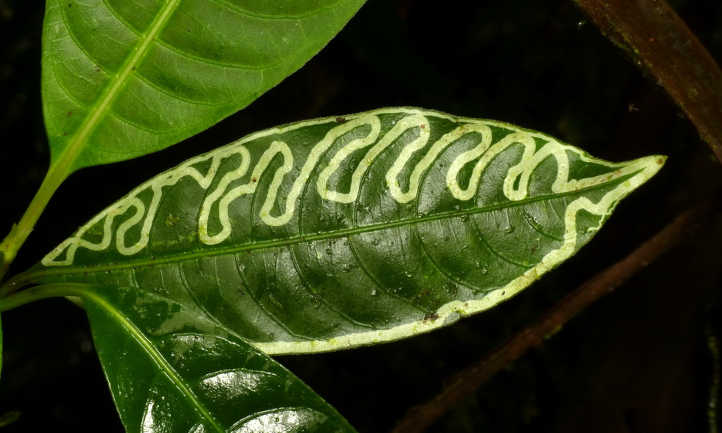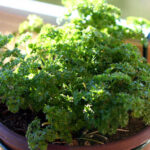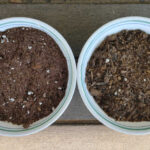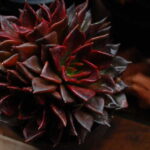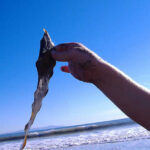You might have noticed winding white trails of the leaf miner on some of your favorite plants. Maybe they suffered as a result of the loss of leaf tissue, or maybe they recovered. But letting leaf miners have their way in your garden comes with risks.
What makes these trails in leaves is the leaf miner larva, which not only removes plant matter as it feeds, but has the potential to spread diseases in the process. Sometimes your plants will make it out of this larval feeding process unscathed, but it’s best to stop them when you can.
This piece is dedicated to uncovering the leaf miner, and examining how to handle them in your garden. We’ll identify the most common types of leaf miner out there, and talk about integrated control methods that will help you keep your plants happy.
Subscribe to the Epic Gardening Podcast on
Leaf Miner Overview
| Common Name(s) | Leaf miner, leafminer, citrus leafminer, tomato leafminer, spinach leaf miner, beet leaf miner, and a number of other names related to particular plant species |
| Scientific Name(s) | Hundreds of species names |
| Family | Multiple different families including Lepidoptera, Symphyta, Diptera, Agromyzidae, Douglasiidae, Gracillariidae, Nepticulidae, Tenthredinidae, Tischeriidae, and more |
| Origin | Worldwide |
| Plants Affected | Extremely wide host range of plants, comprising most trees, shrubs, large-leaved ornamentals, and edibles |
| Common Remedies | Crushing larval form in their trails is the most effective killing method. Alternatives include neem oil, Bt spray, and spinosad spray as well as beneficial insects such as beneficial nematodes and parasitic wasps. Prevention using lures, sticky traps, and floating row covers is highly effective. |
What Are Leafminers?
The subject of this article is leaf mining insects, meaning they mine the area between the cell walls of plant leaves. Thousands of different fly or moth larvae are considered to be leaf miners, and each variety has its own favored plant type. Most of these are from the Lepidoptera (moth), Symphyta (sawfly) or Diptera (fly) families, although there are a few exceptions from other genera. Their life cycles are all similar, but there are subtle differences here and there.
Types of Leaf Miners and Their Hosts
While we won’t name every single one of the thousands of leaf miners out there, we’ll cover the basic categories of many, and the ones you’re most likely to find in your garden. Most often the preferred host of the leafminer in question will determine which you’re dealing with. Thankfully, leafminer treatment is similar across families and species.
- Agromyzidae (leaf miner flies): the light green leaf miners in this family have a number of hosts depending on species; includes holly
- Pegomya hyoscyami (spinach / beet leafminer): the pale yellow larva of this species has a dark black stripe down its back; host plants include chickweed, plantain, nightshade, lamb’s quarters, Swiss chard, beets, and spinach
- Douglasiidae (Douglas leafminer): the plain pale yellow to cream larvae in this family prefer borage, and plants in the mint and rose families
- Gracillariidae (citrus leaf miner, Horse-chestnut leaf miner): the larvae in this family have a wide range of color, from white to light green, with a black or brown obvious head; they prefer citrus trees, horse chestnut, and a wide range of other dicots
- Gelechiidae (tomato leaf miner): members of this leafminer family have a range of anatomies, but many have a cream-colored body with dark brown or black vertical stripes that run their entire length; these prefer Solanum species, including but not limited to tomato, eggplant, potato, Carolina horsenettle, chaparral nightshade, bluewitch nightshade, and Bahama nightshade
- Liriomyza sativae (vegetable leaf miner): the leafminers in this species are stout, and cream to lime green; their preferred hosts include over 20 plants with beans, broccoli, cauliflower, celery, Chinese cabbage, Chinese wax gourd, cucumber, edible gourds, eggplant, green beans, hyotan, lettuce, luffa, onion, passion fruit, peppers, pumpkin, squash, togan, tomatoes, watermelon, yardlong beans, and zucchini among them
- Liriomyza trifolii (American serpentine leaf miner): the larvae of this species are similar to those of the vegetable leafminer; prefers many plants, but namely, chrysanthemum, gerbera, gypsophila, celery, sweet pepper, pea, bean, and potato
- Nepticulidae (pygmy leafminer): these leaf miners are markedly ridged, and range from white to yellow, to orange; host plants include trees; some mine seeds and bark
- Tenthredinidae (sawfly leaf miner): anatomically diverse larvae in this family may have stripes or spots, and range from yellowish green, to brown; host plants include hundreds of plants as this family encompasses several subfamilies
- Tischerioidea (trumpet leaf miner): another family with intensely ridged leaf miner larvae that are yellow or green; preferred hosts of these 500+ species range widely
Life Cycle of Leaf Miners
There are slight differences, but the basic life cycle is the same for all leaf miner species. Female adult leaf miners lay eggs on leaves in early spring, or inside leaf surfaces. If they’re laying eggs inside plant leaves, the female uses her ovipositor, which pierces through the leaf’s skin to inject them within. Sometimes this creates a small raised spot on the leaf’s surface. One female may lay up to 250 eggs at once.
The egg stage lasts ten days or less. In warm weather, the leafminer eggs hatch into larvae. When the larvae hatch they are at their most destructive because they tunnel through the leaf tissue. As the larvae feed, they leave squiggly trails or lines on leaves that leaf miners are associated with. This feeding phase lasts for 2-3 weeks depending on the particular species. Once the larvae near pupation, they chew through the skin of the leaf and drop onto the ground below. Then they burrow an inch or two beneath its surface.
If the weather is too cold for them to survive, the larvae enter dormancy and overwinter in the soil beneath the plant. Otherwise, they form a pupa and begin their final transition out of the larval stages into adulthood. It takes approximately 15 days to metamorphose from pupa to adult. When the leafminer larva finish pupating, the adult moth or fly will dig its way back out of the soil and begin the cycle anew.
Identifying Leaf Miner Damage
Throughout the United States, leaf miners are common, although they aren’t as financially destructive in the northern states. Warmer climate regions house commercial farms which suffer major issues. A wide range of plants are subject to leafminer damage, as we have outlined in the types section. Grasses aren’t likely hosts, but leaf miners pupate beneath grassy soil.
The juicy inner tissues of leaves are subject to leaf miner damage, but they prefer leaf matter that has less cellulose. They may chew through a leaf’s vein to get to more leaf on the other side, but they tend to ignore the veins in favor of sweeter, softer plant tissues. As the bug’s tracks are created, the affected area becomes a trail of dead tissue.
Particular species of leaf miners are incredibly selective. Citrus leafminers are an excellent example. While the citrus leafminer may not cause extensive damage to a tree, they leave open pathways for fungal or bacterial growth on the leaves. For farmers, the damage caused by citrus leafminer makes portions or the entire crop unsellable. Additionally, spinach leaf miner damage makes the leaves unpalatable and potentially unsafe to consume. Appearances of leaf miners are a sign it’s time to act.
Leafminer species don’t limit their feeding to edible plants. Oak and aspen leaves are subject to leafminer problems, and leaf miner boxwood issues are common in hedging. A number of flowering plants, trees, and shrubs are susceptible to damage as well by the vegetable leaf miner, citrus leafminer, and American serpentine leaf miner.
While in most cases this leaf miner damage won’t kill a plant unless it’s extremely heavily infested, they affect plant growth and cause unsightly views for gardeners. Their trails can destroy leaves, though.
Leaf Miners As Disease Vectors
Learning how to prevent leaf miners and understanding leaf miner control is also important because infested plants can be subject to diseases. As the leaf miner larva leaves the plant, the leaf miner trails are vacated, making way for fungal and bacterial disease to colonize them. Many of the diseases associated with leaf miner larva are of the soft rot variety – root rot is one of them. These are highly communicable, and infected plants may have to be destroyed to control the spread.
Controlling Leaf Miners
The best mode of control for infestations will be an integrated pest management strategy that includes cultural, biological, and insecticidal tools. Let’s talk about those so you can keep that citrus leafminer, serpentine leaf miner, or some other kind off your citrus trees or other plants. Keep your finger lime tree safe by maintaining the population of this pest in your garden.
Cultural Control
The first step in environmental control is actually the simplest. If you see a leaf that appears to house one of these tiny pests with their winding leaf mines, follow where they lead. Miners within bug tracks can be squeezed with your thumb and forefinger. You may be able to kill the larvae inside the leaf this way.
Healthy plants are the least damaged by these little chewing pests, so ensure your plants are well taken care of. Regularly fertilize your plants, keep them pruned well, and provide compost or other good soil for them to grow in. Plant health is paramount!
Related to the health of your plants is keeping the garden free of plant debris to throw a kink in the entire life cycle of these miners. Many overwinter in crop debris, along with a few different diseases.
Biological Removal of Leaf Miners
Beneficial insects come into play here as well. Certain species of nematodes kill pupae in the soil, preventing the emergence of egg-laying adults, like flies or tiny moths that keep the life cycle going. Adding beneficial nematodes to your soil will help eliminate those, too. You’ll have to treat your soil in temperate seasons at least twice to establish a productive colony of nematodes.
A particular species of parasitoid wasps, Diglyphus isaea, finds the larvae while they’re in their trails. These tiny wasps lay their eggs inside the leaf miner larvae. As they hatch, the larvae are consumed from within. Learn how to grow lettuce and plant chrysanthemums to bring these helpers into your garden. They’re harmless to humans too!
Insecticidal Removal of Leaf Miners
It’s hard to kill leaf miners by spraying leaves with insecticides because those in the larval stage are protected inside infected leaves. Because of this, spray solutions have limited effect. However, a thorough coating of all plant surfaces with neem oil does have some effect. Not only does neem actively fertilize the plant, the naturally-occuring azdirachtin compounds in the oil slowly kill leaf miners, especially with repeated spraying.
Application of Bacillus thuringiensis sprays, also known as BT, helps with some larval issues. These bacteria poison leaf miner larvae if they come into contact with them. In the worst cases of infestation, a spinosad spray (made from a different soil bacteria) may be of use. Once it has soaked through the leaf surface, the spray will kill leaf miners inside. However, like all of these, it will take multiple applications to work.
Overall, systemic pesticides and chemical controls should be a last resort, coupled with natural controls. This is because most pesticides can kill natural enemies of leaf miners and other insects you’d like to keep around in your garden to fight other pests.
Preventing Leaf Miners
The most important part of leaf miner treatment is not knowing how to get rid of leafminers, but prevention. There are a few different options for preventing the assortment of flies and moths that produce leaf miners from causing future harm.
Use a floating row cover to prevent adult flies from reaching your plants. If you’re concerned about citrus leaf miners or leaf miner on citrus trees, cover the tree with the same fabric used for row covers and affix it at the trunk with some string. If they can’t reach the plant, they can’t lay their eggs. And if they can’t lay their eggs, the leaf miners can’t leave trails!
A yellow sticky leaf miner trap is also a solution. Hang these near or on plants where leaf miner damage is likely to happen. Flies and moths will get stuck to them and will die off. Note these can also trap natural enemies of leaf miners. Be strategic when you place them.
Certain species of leafminer respond well to pheromone traps. Citrus leafminer control can be achieved with the use of these lures, for instance. The pheromones lure adults to the trap, and they get stuck within and die. These traps don’t have the same risk of luring in natural enemies like sticky traps do.
Frequently Asked Questions
Q: How do you get rid of leaf miners?
A: Check out the Control section above!
Q: What is the best treatment for leaf miners?
A: An integrated strategy that includes cultural and biological methods is best. Insecticidal methods are best used as a last resort.
Q: Should I remove leaf miner leaves?
A: If the plant won’t suffer from the removal of a leaf, yes.
Q: How do you control leaf miners naturally?
A: There’s a great bit of info about that in the control section.
Q: What do leaf miners turn into?
A: Some become flies, and some become moths.
Q: Does insecticidal soap work on leaf miners?
A: No, this pesticide hasn’t proven to be an effective treatment.
Q: Can you eat leaves with leaf miners?
A: You can, but it’s not recommended as they can spread disease while they feed. This is especially true with spinach.
Q: Does BT work on leaf miners?
A: It does! Check out the Insecticidal Removal section of this piece.
Q: Are leaf miners invasive?
A: Some of them are, giving you even more reason to control and remove them.
Q: Will diatomaceous earth kill leaf miners?
A: Powders like diatomaceous earth are inefficient at eradicating leaf miner larvae because the larvae just don’t come into contact with it. It can be spread dry over the soil surface underneath a plant and dusted onto the plant’s leaf surfaces. Emerging larvae that are preparing to drop into the soil to pupate may come into contact with it that way, but it is not as effective as other methods.

